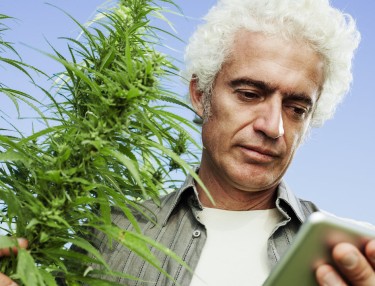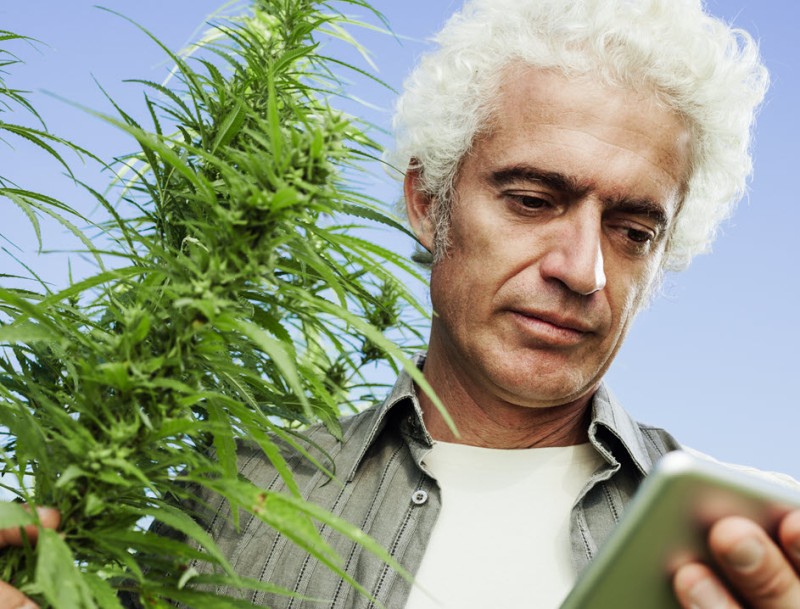
Harvest is undeniably the most crucial stage in the journey of marijuana products, be it flowers, oils, or any other form, before they reach consumers. However, achieving the best crop condition before the harvest involves extensive planning and pre-harvest preparations. This preparation applies to indoor, greenhouse, and outdoor cultivation, each presenting unique challenges.
Indoor cultivation is perceived as the most controlled environment, but problems can quickly escalate if cultivators must meticulously plan and diligently monitor their crops to keep them on track.
Nic Robertson, Massachusetts's vice president of operations for the multistate operator 4Front Ventures, emphasises the significance of setting targets for each step in the plants' day-to-day life span. All their schedules revolve around a well-planned harvest schedule. Meeting the production goals relies on precise testing, harvesting, and transplanting timing.
There is some flexibility to adjust schedules to achieve the best flower quality. However, any changes must consider the potential impacts on cannabis plants, as no decision is isolated from the overall scheduling.
Ryan Cook, the executive vice president of operations at Jushi Holdings in Florida, agrees that thorough planning and preparation are the keys to a successful harvest day. The front-end work minimises subjective decision-making during the harvest.
Cultivators who plan their indoor harvests well in advance follow various commonalities to ensure success, such as adjusting lighting, temperature, humidity, nutrients, watering, flushing, and defoliation.
The specific adjustments depend on the cultivation environment's characteristics, including the size of the growing room, plant canopy, strains being grown, HVAC system type, and lights used. Growers must figure out the best pre-harvest tactics in their respective setups.
Lighting
Indoor cannabis cultivators frequently make pre-harvest adjustments to the intensity and spectrum of light.
During the initial week of the flowering phase, Jushi begins with an LED light intensity of 700 micromoles (a unit used to measure brightness).
As the plants progress to week three of flowering, the cultivation team moves the lights closer to the canopy by about 10 to 12 inches, increasing the micromoles to a range of 1,000 to 1,400, as reported by Josh Malman, Jushi's vice president of cultivation.
They maintain this light intensity level until the final week of flowering when the light intensity is returned to 700 micromoles. This adjustment helps lower the canopy temperature and preserves the terpenes from volatilising off towards the end of the cycle.
Additionally, some growers prefer to expose their plants to extra red light. By incorporating a few minutes of red-spectrum light daily, they alter the typical flower-phase light cycle of 12 hours for light and darkness to a cycle of around 13 hours of light and 11 hours of darkness.
According to some cultivators, this supplementary light increases yields and promotes a richer cannabinoid and terpene profile.
Heat and humidity
As harvest approaches, indoor cannabis growers adjust temperature and humidity levels to initiate the drying-out process of the plants. Lowering moisture content helps preserve terpenes and prevents microbial contamination, which is more common in the late flowering phase when the plants are near full maturity.
Lowering temperatures towards the end of the flowering phase can improve flower quality by mimicking cooler fall temperatures. This causes buds to tighten up, becoming denser, which is desirable for the final product. However, growers must be cautious not to let the room get too cold, as it may promote mould and pathogenic growth due to increased moisture in the air.
In the final weeks before harvest, maintaining temperatures around 72 degrees Fahrenheit and reducing humidity to 40%-45% is recommended by some cultivators. Others gradually lower temperatures from the high 70s during the early weeks of flowering to the low 70s. These adjustments can enhance the production of anthocyanins, responsible for the purple and red pigments in certain cannabis strains.
Cultivators can carefully manage temperature and humidity levels to optimise flower quality and preserve valuable terpenes while minimising the risk of microbial contamination.
Nutrients
As harvest approaches, cultivators significantly change their nutrient usage for cannabis plants. Nitrogen is the most crucial nutrient that influences the plant's growth at any stage. Cultivators begin to reduce nitrogen inputs about halfway through the flowering cycle to ensure proper development and focus the plant's energy in the right places.
At 4Front, growers anticipate harvest and adjust the nutrient balance to direct the plant's energy toward bud, resin, and cannabinoid production. As nitrogen decreases, phosphorus and potassium levels increase to maintain a favorable nutrient balance. These three major nutrients, N (nitrogen), P (phosphorus), and K (potassium), play a vital role in the plant's growth and development.
However, it's essential to exercise caution when reducing nitrogen too early, as it may lead to premature senescence (deterioration) of leaves, potentially creating risks of microbial or bacterial fungal issues, as warned by Cook from Jushi. Striking the right balance of nutrients is crucial to ensure a successful and healthy harvest.
Watering and flushing
Watering and flushing the cannabis plant of nutrients are critical parts of pre-harvest preparation. Flushing typically occurs in the last week or days leading up to harvest, aiming to remove excess nutrients that might negatively impact the taste and burning quality of the flower.
While the nutrient regimen naturally tapers as the crop cycle progresses, growers like Malman emphasise the importance of continuing nutrient supply until close to the end. Stopping food too early can lead to the plant's decline, causing natural senescence in the flowers and leaves and posing risks for detritus. The last three to five days are reserved for rest, as growth is minimal during that time.
As harvest approaches and flushing begins, monitoring the plant's moisture content becomes crucial. Older plants don't drink at the same pace, so adjustments in watering are necessary to maintain the right balance. Jushi implements sensors in rock wool and coco cubes connected to the grow's fertigation systems for precise monitoring. In less advanced facilities, handheld moisture meters determine appropriate water reductions before harvest.
Finding the right balance is essential during flushing, as overwatering can be problematic, especially when trying to achieve flushing. Heavy flushing can stress the plant and introduce excess moisture, leading to potential issues. When plants are correctly fed throughout their life spans, the need for heavy flushing is reduced, preventing excessive water usage and potential root-related problems.
The goal during flushing is to achieve a balanced approach that doesn't compromise the flower's aroma, colour, or overall quality. Growers can ensure a successful and healthy harvest by implementing the right techniques.
Bottom Line
Pre-harvest preparations are essential for indoor marijuana cultivators to achieve successful and high-quality harvests. Adjustments in lighting, temperature, humidity, nutrients, and watering are critical in optimising plant growth and preserving valuable terpenes. Thorough planning and meticulous monitoring throughout the cultivation cycle ensure that cannabis products meet consumers' expectations and deliver the desired taste and quality. By following these pre-harvest tips, cultivators can maximise yields, enhance cannabinoid profiles, and produce top-notch cannabis products for the market.







